Not every guitarist is created equal. Some need the crushing power of a Marshall stack, and others are just looking to jam anywhere, and need something a little more portable and easy.
A lunchbox style portable amplifier is going to be the best bet for the shredder that doesn’t want to be tied down. There are many different options, depending on what you need and don’t need including battery power and tone, but the Pignose Legendary 7-100 seems to have the most features and quality for the price, as well as the resume to back it up.
After hours of researching portable amplifiers and putting myself in the position of someone who is going to be using it for an everyday application, the choice was clear. However there are several options, and if you look a little deeper, you might find the perfect lunchbox amp to fit your needs.

Credit: Musician’s Friend
Top Pick: Pignose Legendary 7-100
Buy from Amazon
It does not overdrive by getting louder, it overdrives by playing harder, just like any good, dirty blues or rock amp. At the price point of only $75.00, its unique design allows so much versatility in tone.
How to Choose a Lunchbox-Style Portable Amp
It can be overwhelming to look at the gigantic list of lunchbox amps on Musicians Friend, Amazon, or your local guitar shop, and try to pick what is going to suit your needs more. There can be pitfalls and shortcomings when trying to fit a lot of tone into a small package.
Often, things like volume and reliability can go right out the window in the interest of portability. It is important to realize that many amplifiers that advertise themselves as a portable option are simply toys, and perhaps aren’t going to give you the volume and definition that you might be looking for.
It is not uncommon for many of these to be made of cheap plastic, and sport speakers that would be best used in a set of headphones.The advantages of having a good, pro quality lunchbox amp at your disposal are endless.
Why a Lunchbox
If you are the kind of player that is constantly playing and practicing, you are going to want optimal tone no matter where you are.
At the beach, the park, or your lunch break at work, a good portable amp can make all the difference. Another huge advantage of this kind of portable tone is for the home recorder.
How many of us have our home studios in apartment complexes or our parents’ basements, unable to crank up and get that real, overdriven sound we long for? A small amp that can be close mic’d and cranked up as loud as it gets will still get you that soaring distortion you need.
Famously, Queen’s Brian May used a custom built portable amplifier for his recording and even live applications. In many of May’s live videos, his signature walls of amplifiers were empty cabinets, with his special lunchbox amp cranked and mic’d backstage.
Portability
The real issue with a lunchbox amp is going to be exactly how portable you are going to need it to be. A factor in this is going to be whether or not you need it to be battery powered or not. An amp that simply has a speaker and a few preamp electronics in it is going to weigh significantly less than one that has to carry around a rechargeable battery.
Anyone who is looking to jam out in nature or busk in the subway station is going to have a heck of a time trying to find an outlet to use, and station agents in the kiosk are not usually too keen on letting you use his or her outlets.
So, in that case, if you are looking to have a little more freedom in your playing, you are going to have to sacrifice a little bit of the lightweight quality to accommodate a battery.
Budget
One of the best things about a small amplifier is if you are just learning how to play guitar or are not interested in playing out in the clubs or bands, you might not want to make the investment of thousands of dollars to buy a high quality, professional-grade amplifier.
Depending on the type of music you are interested in, an acoustic guitar simply will not offer the ease and fun of playing with the distortion turned up and feedback on your side. In this case, a small, lunchbox amp will be your way to go.
Practice
If you are just learning to play, you may also not be too keen on your neighbors listening to your stumbling versions of songs until you are ready to let it rip and blow out their windows with your awesome power of rock.
For those of us that are a little more timid in our rocking, a good amp with good tone and a good set of headphones are just the thing you need. Instead of trying to play as quiet as possible, simply slap on the headphones and crank up as loud as you want, but be careful of your hearing! You cannot get better at that solo if you cannot hear.
Now that all of that has been taken into consideration, finding the unit that is going to best suit what you are looking for is going to be the key. It is nearly impossible to find one that is going to satisfy every need that you may have, but it is possible to get close and end up incredibly happy with your new lunchbox amp.
The Competition
After hours of testing and research, here's the final competition.
| Instrument | Rating | Current Pricing |
|---|---|---|
The Pignose 7-100 | Has a cool, unique look |  |
Orange Crush CR-3 | It also features a tuner built on to the top of the unit, on the control panel, which is a convenient addition |  |
ZT Lunchbox | Portable amp specifically designed for acoustic musicians |  |
Eden Microtour Mini Bass Amp | Looking to add some power to your bass on the go, this is the lunchbox amp for you |  |
Roland Microcube GX | It includes DSP effects such as a chorus and flanger, as well as amp modeling to dial in your tone as best as possible |  |
Fender Passport Mini | It features a vocal and guitar channel, eliminating the need for a separate PA system |  |
Marshall MS 2 | Has switchable clean and overdrive channels and delivers a surprising amount of volume from its little, 1-watt power amp |  |
Our Top Pick: The Pignose 7-100

Credit: Musician’s Friend
After heading to my local music shop and playing on a couple of lunchbox amps, as well as doing research in customer reviews on the subject, it was clear.
The Pignose 7-100 not only has a cool, unique look, once I plugged into it, it blew all of the competition out of the water. After looking into the history of the legendary amp, it was no surprise why it had been the go-to for so many years.
Originally invented in 1969 by Richard Edlund, a special effects guru who has won Oscars for films such as Star Wars and Indiana Jones, prototypes of the Pignose were given out to bands such as Led Zeppelin, The Eagles, The Beatles, and The Rolling Stones.
This famous clientele spread the word about the little amp that packed a big punch. Since then, it has been used on recordings by Frank Zappa, Joe Walsh, and Eric Clapton. The big question is; why did it catch on with these giants?
Whatever it is that people are looking for in an amplifier, whatever certain, unnamable quality some of them have, the Pignose 7-100 has it. Coming in at a small price point of only $75.00, its unique design allows so many options as far as tone.
The speaker and electronics sit in a hinged case that can be opened and closed, changing the filter envelope much like a wah pedal does, and frankly, it is beautifully nasty. It does not overdrive by getting louder, it overdrives by playing harder, just like any good, dirty blues or rock amp.
As a side benefit, this also makes it an ideal amplification system for a blues harp player. Coupled with a bullet harmonica microphone, the Pignose 7-100 will get you that gritty, overdriven, Chicago blues sound.
Other Amps to Consider:
Orange Crush CR-3

Credit: Musician’s Friend
Having gushed enough about the Pignose 7-100, there are other options. One of the better runners-up is easily the Orange Crush CR-3. Priced around the same as the Pignose (a new one will run you about 70 bucks) the CR-3 does have a few more features.
The biggest difference between this and the Pignose is the addition of a headphone jack. The Pignose does have a preamp out, but it is not ideal for using with headphones.
Having the dedicated jack on the CR-3 makes it all the better for the tone head that’s just learning how to master their instrument. It also features a tuner built on to the top of the unit, on the control panel, which is a convenient addition.
The CR-3, however, does have a significantly smaller speaker than the Pignose, at just three and a half inches as opposed to the Pignose’s mighty six-inch driver.
These two are not the only options, however. Even a cursory Google search of “Lunchbox Amplifiers” will yield many results. Here are a few of the other products that might suit your musical needs.
ZT Lunchbox

Credit: ZT Amplifiers
Quite literally named, the ZT Lunchbox is a portable amp specifically designed for acoustic musicians.
It comes in at about ten times the cost as the previously named amps but cranks out 200 watts from a speaker that is the same size as the Pignose’s. If you have more to spend and are looking to fill a room or coffeehouse with the sound of your acoustic guitar, this is the option for you.
Eden Microtour Mini Bass Amp

Credit: EDEN Amplification
As usual, bass players are not getting quite enough love in the portable amplifier market. The Eden Microtour is the exception here.
Knowing how fickle the output of a bass guitar can be, Eden has developed a product comparable to the ones on the six string market. Don’t expect to be blowing anyone away with its volume, but if you are looking to add some power to your bass on the go, this is the lunchbox amp for you.
Roland Microcube GX

Credit: Roland Corporation
The favorite product for buskers of all types, the Microcube is incredibly versatile and powerful for being in such a small package.
The price point on this is about 150 dollars or twice as much as the Pignose, but it has a lot more features. It includes DSP effects such as a chorus and flanger, as well as amp modeling to dial in your tone as best as possible.
Fender Passport Mini
Certainly offering more wattage than many of its competitors, the Passport Mini is an all in one solution for solo performers. It features a vocal and guitar channel, eliminating the need for a separate PA system, as well as a 1/8” input for hooking up a drum machine or iPod for backing tracks.
Known for products that are easy to use and easy to pack up and move, Passport is keeping that reputation alive and well with this amp.
Marshall MS 2

Credit: Musician’s Friend
Perhaps the most “toy-like” of all the above amps, the Marshall MS 2 is still very cool. The smallest package out of all of them, it is just 14 x 11 x 6 centimeters, allowing you to throw it in your backpack or keep it wherever you like.
Even though it comes in such a small package, this little mini Marshall stack still has switchable clean and overdrive channels and delivers a surprising amount of volume from its little, 1-watt power amp.
Sources
• http://www.guitarplayer.com/miscellaneous/1139/vox-brian-may-special-vbm1/17415
• https://en.wikipedia.org/wiki/Pignose)
• https://en.wikipedia.org/wiki/Richard_Edlund

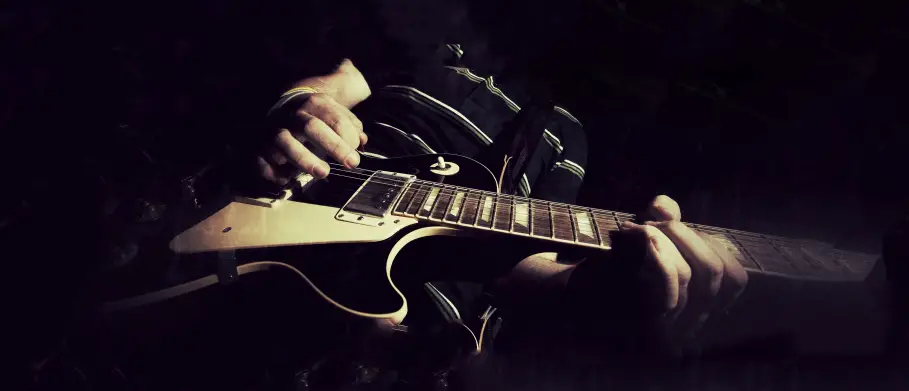



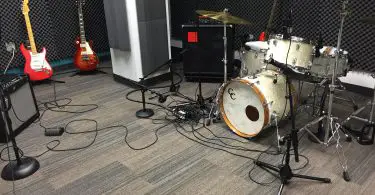
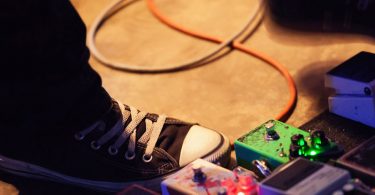
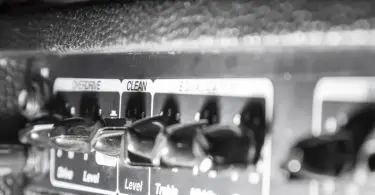
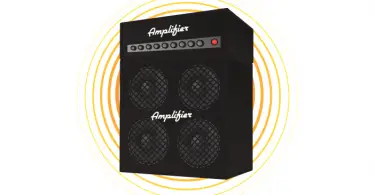
Start the discussion at talk.hearthemusicplay.com